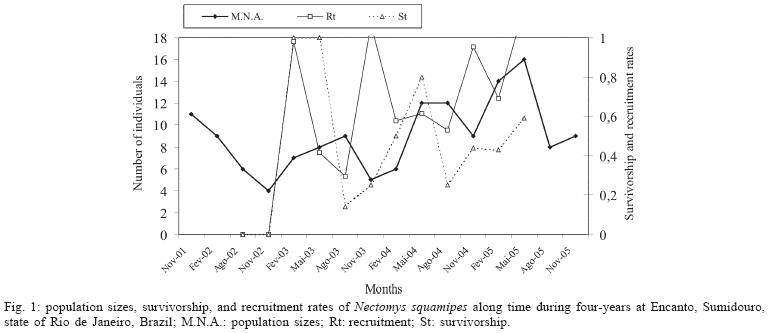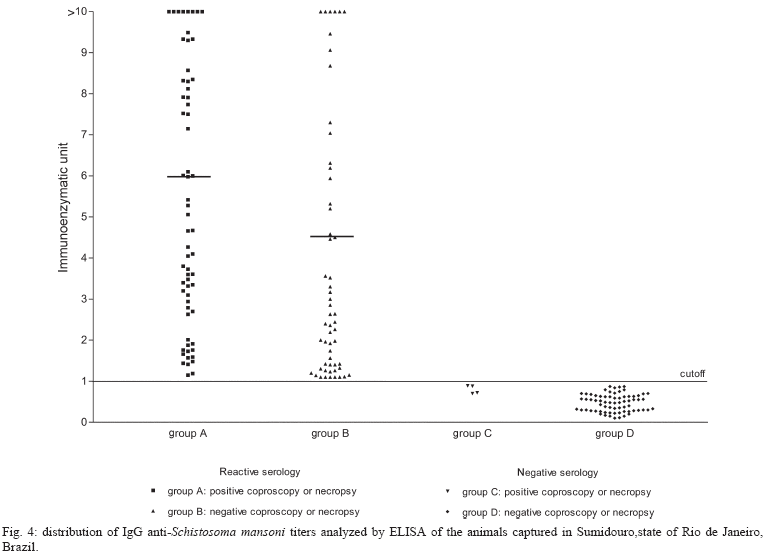Small mammals are found naturally infected by Schistosoma mansoni, becoming a confounding factor for control programs of schistosomiasis in endemic areas. The aims of this study were: to investigate the infection rates by S. mansoni on the water-rat Nectomys squamipes during four years in endemic areas of Sumidouro, state of Rio de Janeiro, using mark-recapture technique; to compare two diagnostic methods for schistosomiasis; and to evaluate the effects of the chemotherapy in the human infected population on the rodent infection rates. The rodent infection rates of S. mansoni increased when rodent population sizes were lower. Coprology and serology results presented the same trends along time and were correlated. Serology could detect recent infection, including the false negatives in the coprology. The chemotherapy in the humans could not interrupt the rodent infection. Rodents can increase the schistosomiaisis transmission where it already exists, they probably maintain the transmission cycle in the nature and can be considered as biological indicators of the transmission sites of this parasite since they are highly susceptible to infection. The water-rats may present different levels of importance in the transmission dynamics of S. mansoni infection cycle for each area, and can be considered important wild-reservoirs of this human disease.
diagnostic methods; population ecology; rodents; schistosomiasis




